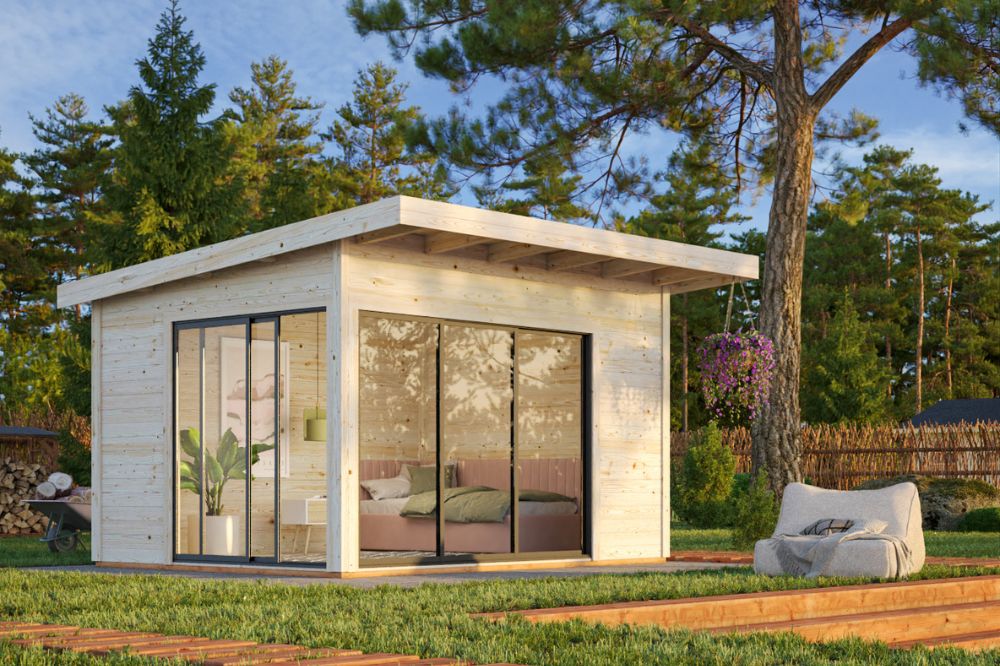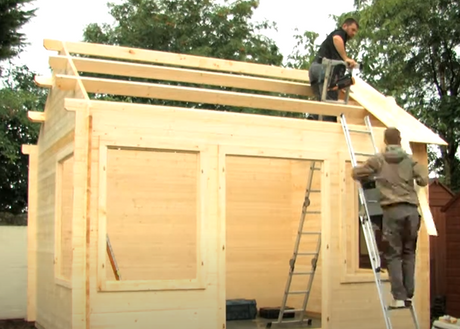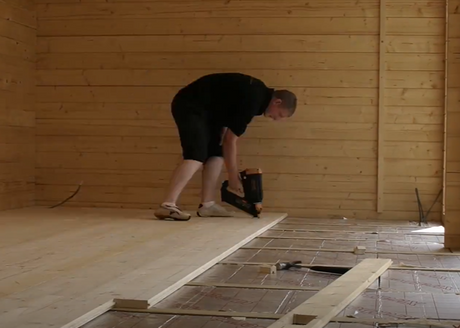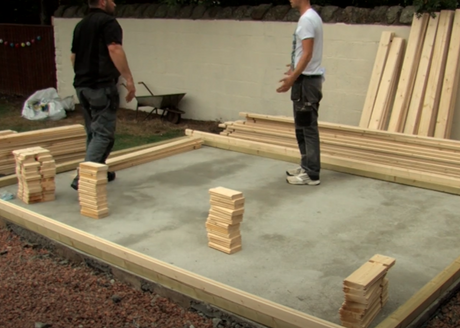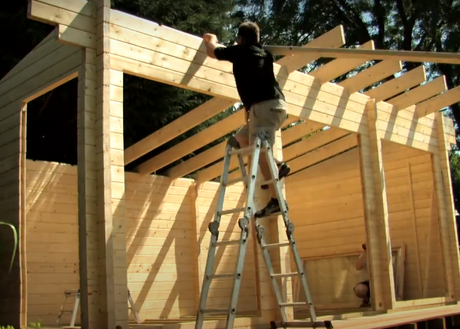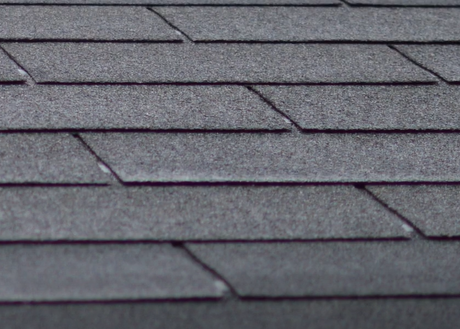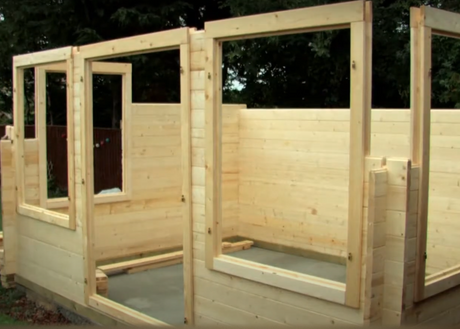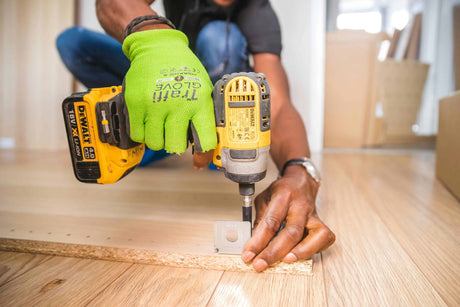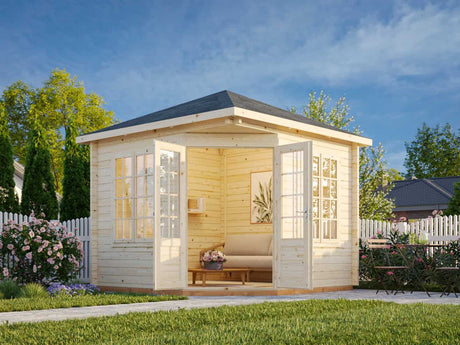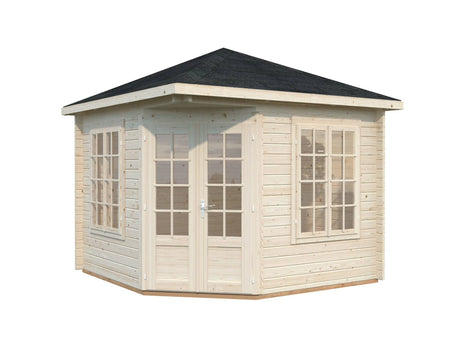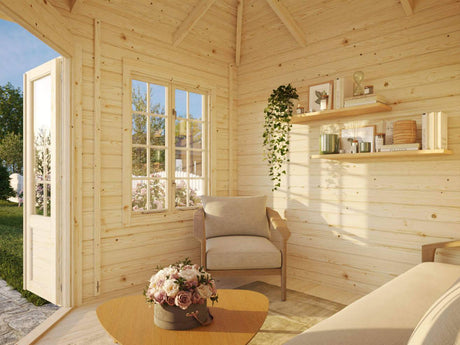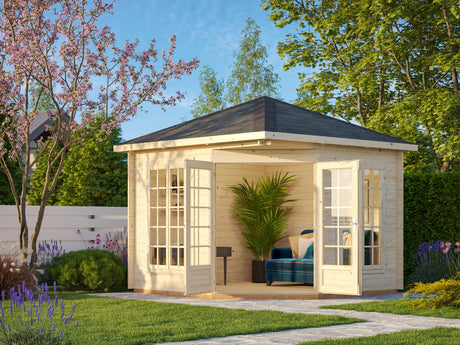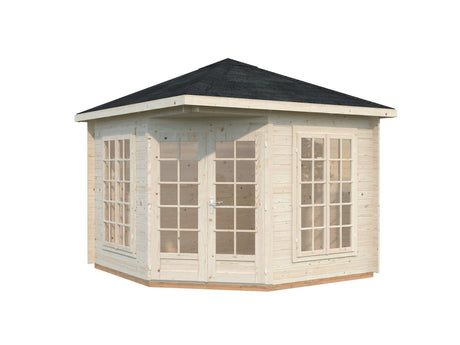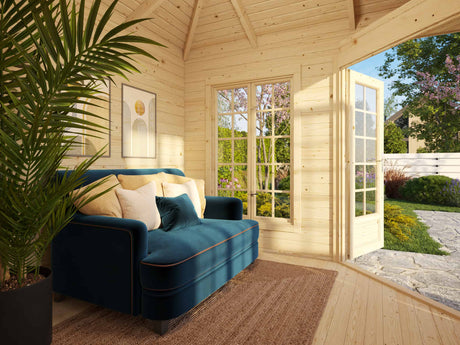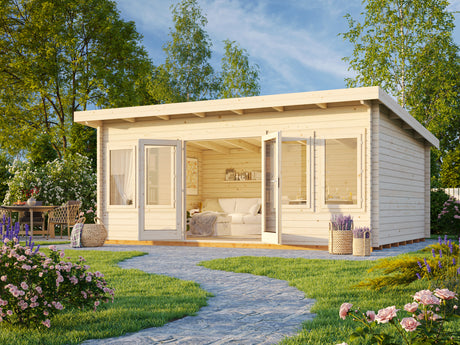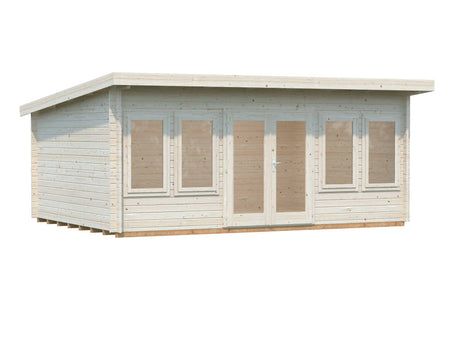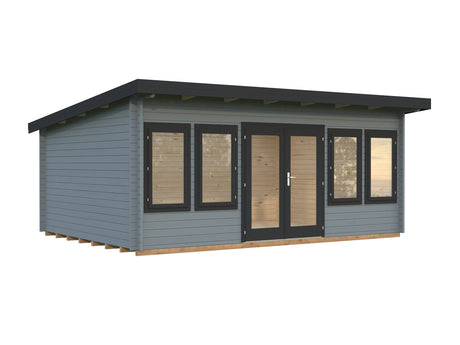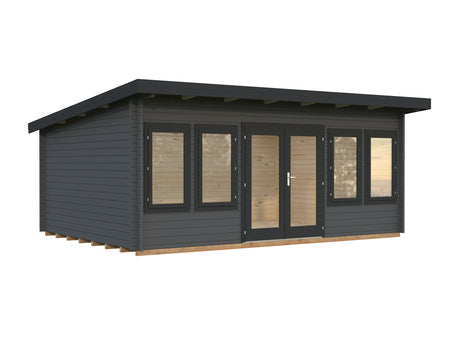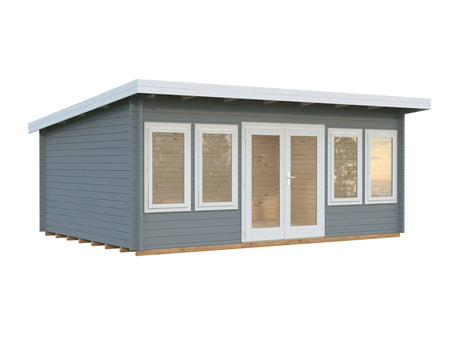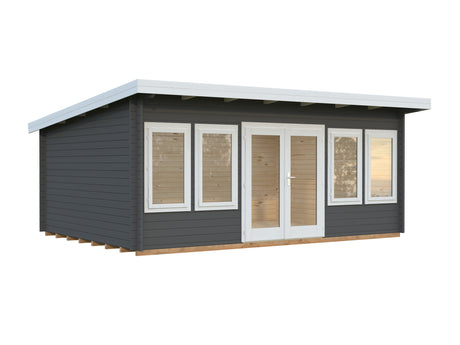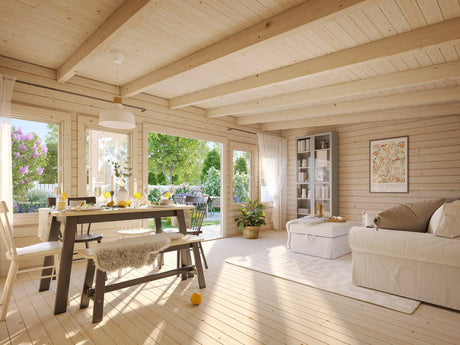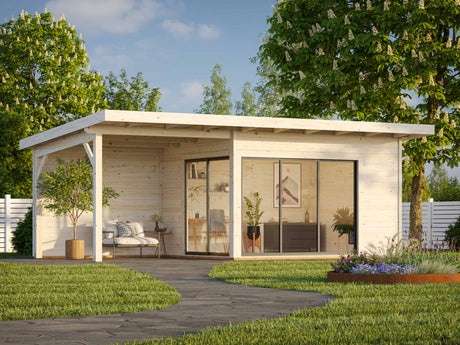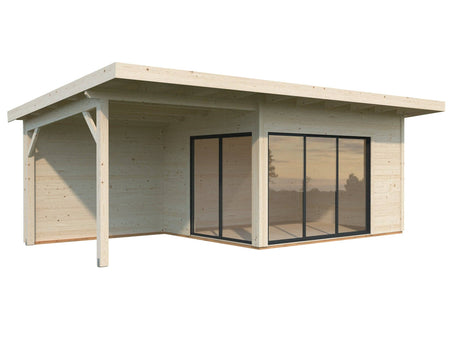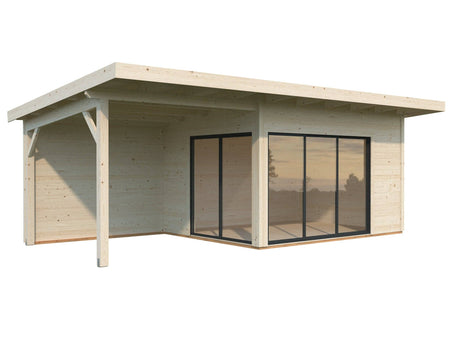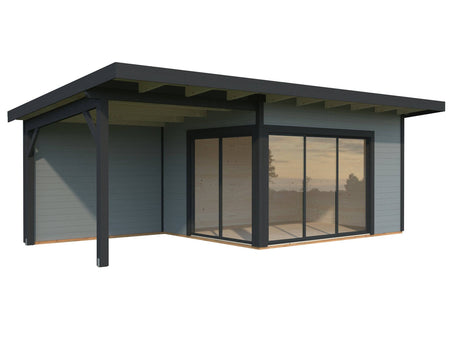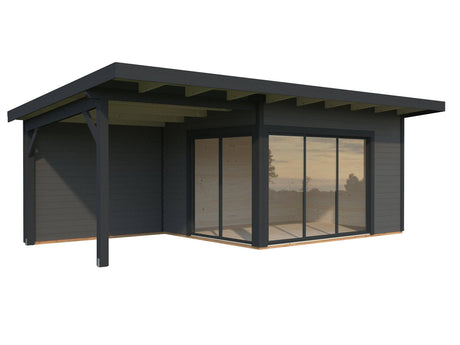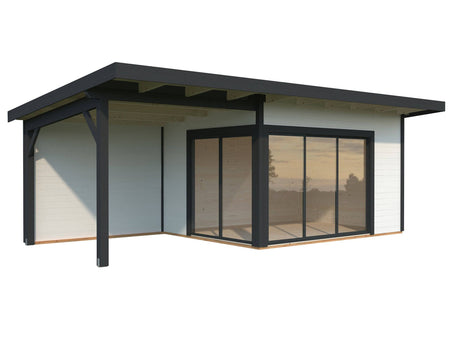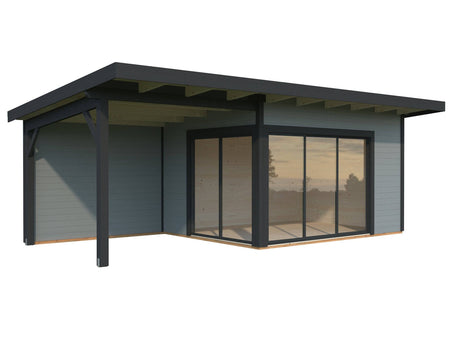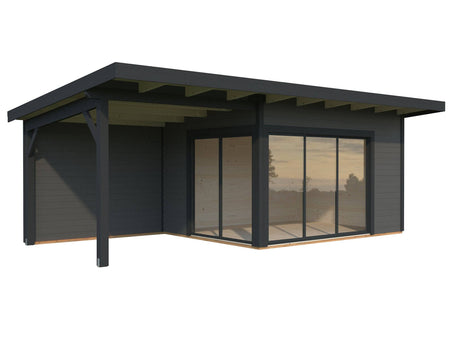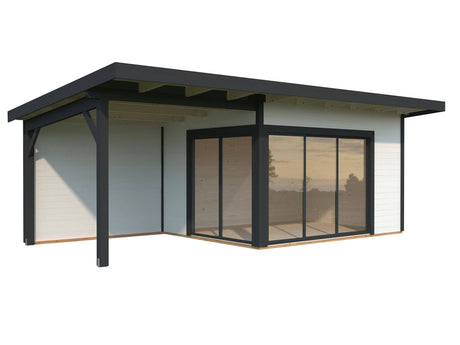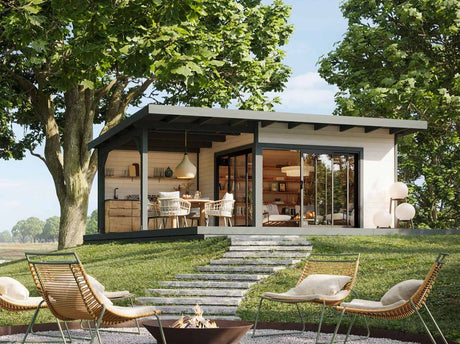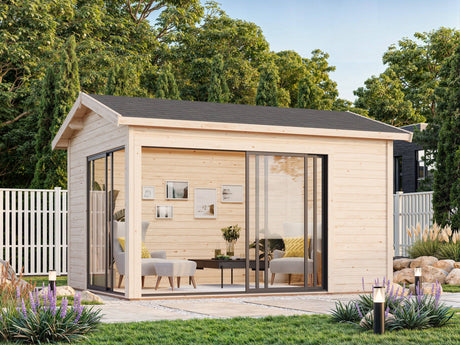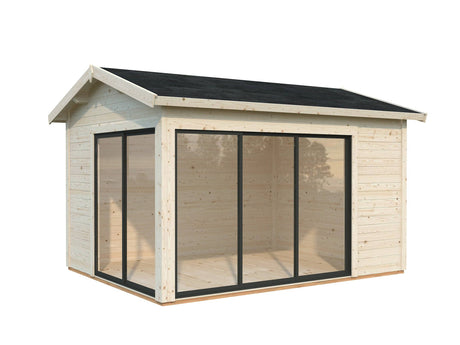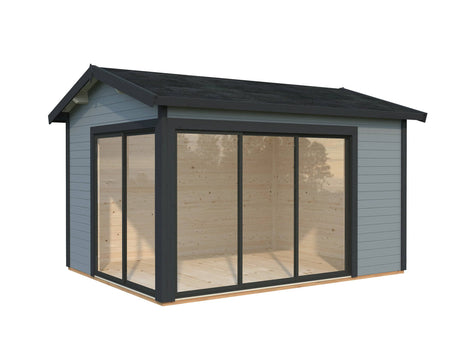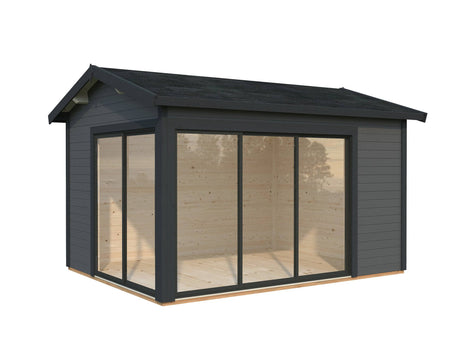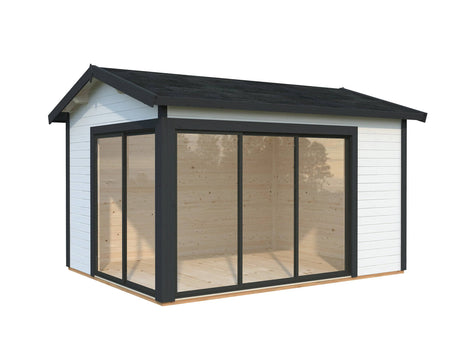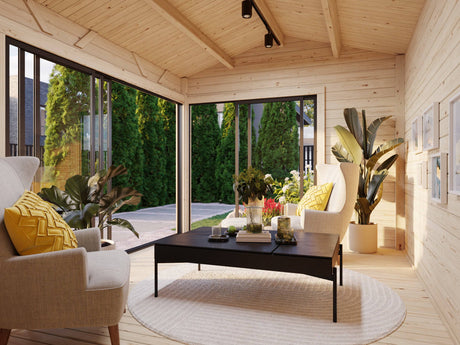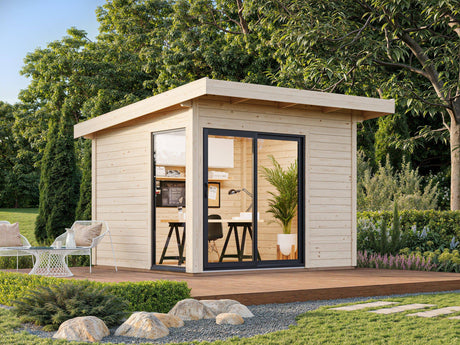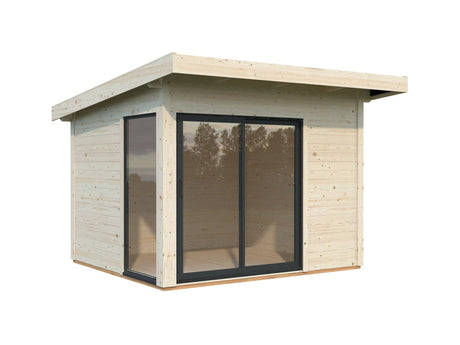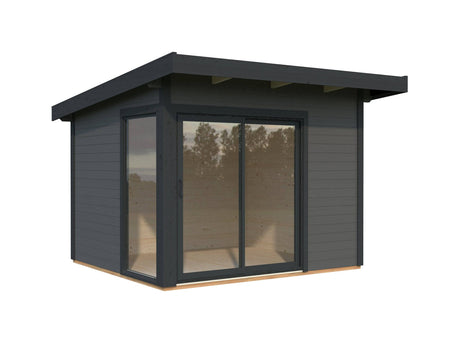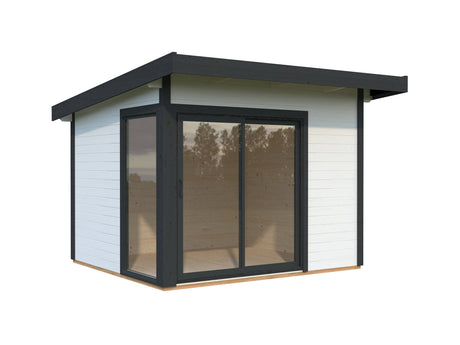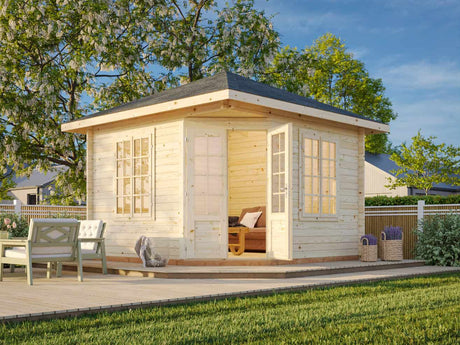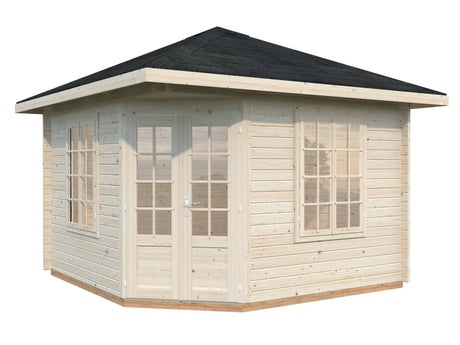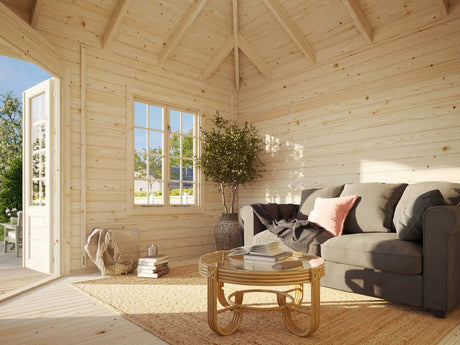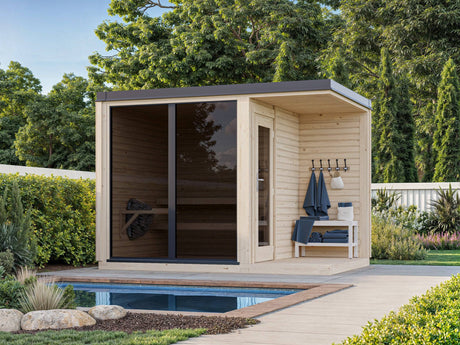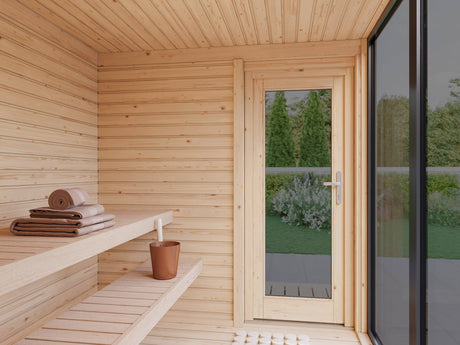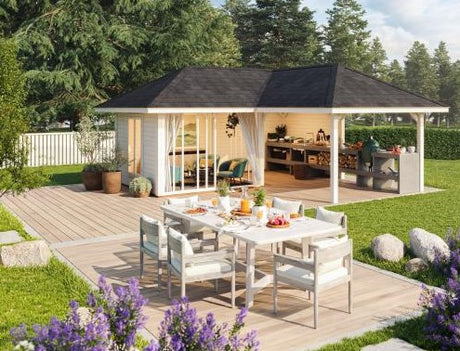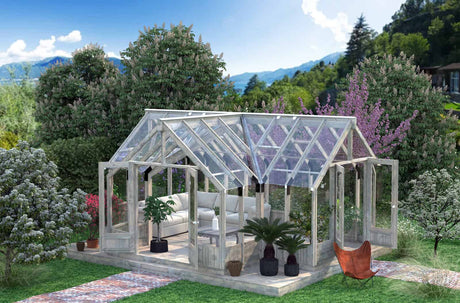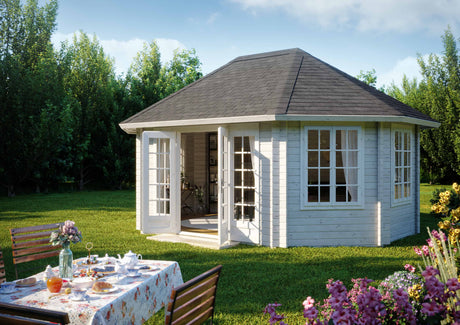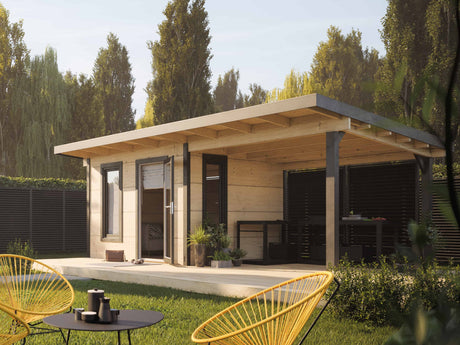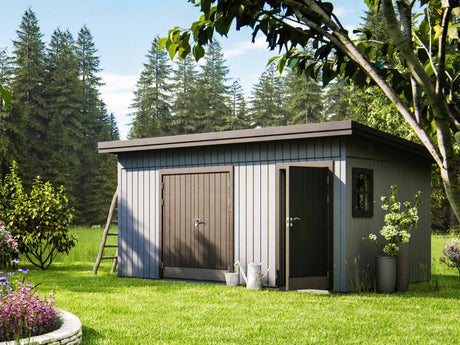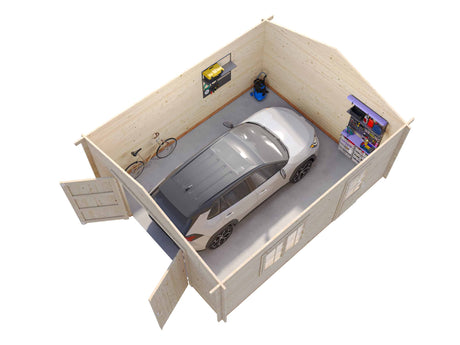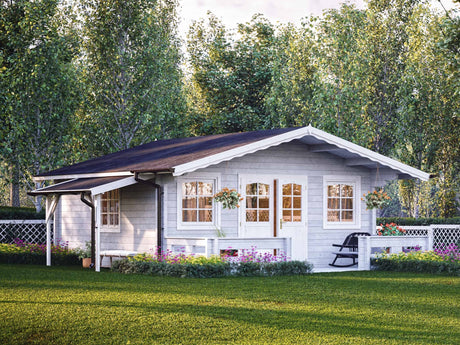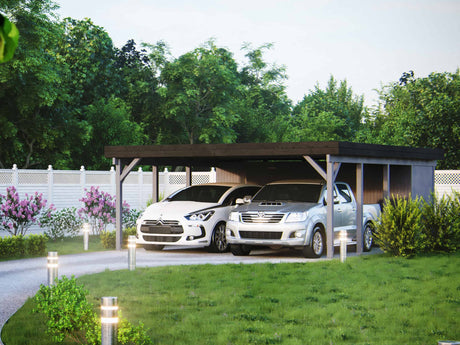Considering the notoriously damp climate here in the UK, it’s only natural to wonder about the longevity of log cabins. Can these charming rustic structures truly stand the test of time against our unpredictable British weather?
There’s no question that log cabins have long been a popular eco-friendly choice in the UK, and rightly so. They’re a cost-effective and sustainable way to expand our living space. Although the benefits are seemingly endless, let’s tackle the major durability concerns.
What is the Lifespan of a Log Cabin?
Here’s the good news - log cabins can last a lifetime if constructed and maintained properly! Take this log cabin, for example. It was reportedly built in 1857 but still looks as good as new after relocation and a few modifications.
So, despite their appearance, log cabins can be pretty sturdy, withstanding time and our unpredictable weather. But it all depends on several factors, namely:
Quality of the material
At Palmako we value the importance of wood quality when it comes to our log cabins. We understand how different wood types vary in durability and resistance to rot, moulding, and pests.
That’s why we invest in using only the best quality wood in all our timber projects - the premium Nordic Spruce wood. It is slow-grown with high durability over time but also light and easy to work with and treat to withstand our changing climates.
Aside from the wood, we also ensure every other material used in various parts of our log cabin home kits is also top-notch. Right from our double-glazed windows and doors with sealed glass to our premium quality roof felts, shingles, and nail bundles. All of these enhance log cabin insulation and maintain the temperature and air quality indoors.
Design structure
The design of a log cabin can also help improve its life span. So, when we design our log cabins, it’s more than just the aesthetic. For instance, we ensure the roof overhangs are large enough to prevent runoff water from the roof from splashing against the logs. This especially comes in handy in wetter regions like Scotland where we receive more rain.
The Emily Log Cabin Holiday Chalet
Side Note: Planning permission may be required depending on the size and purpose of the log cabin. Our log cabin designs come in a variety of sizes ranging from small (under 10 sqm) to large (over 20 sqm). So, before settling on the most suitable choice from our collection, look into whether you need a log cabin planning permission. We recommend contacting the local planning authorities to confirm whether you need planning permission and how to get one.
Climate
Weather changes are among our main considerations when designing our sustainable log cabins. For example, to protect our cabins against sun damage from our harsh summer weather, especially in hotter regions like South England, we offer treated and factory-painted options with many of our cabin kits. Our impregnated floor beams also offer additional protection against moisture and rot, which is perfect for the prolonged wet and rainy seasons.
Maintenance
How well or often log homes are maintained will significantly affect their durability. A properly maintained log cabin will last longer. Proper maintenance involved things like picking the right timber treatment or regular cleaning. But we’ll get into more detail about the best maintenance tips later in the article. First, let’s dive deeper into the problems we’re likely to encounter over time as log cabin owners here in the UK.
What Common Problems Might Affect a Log Cabin Over Time?
Log cabins are especially vulnerable to the weather and other natural elements so issues will crop up over time. The following are some of the common problems you may have to deal with as time progresses:
Mould and Rot
Thanks to our predominantly damp climate, our log cabins have prolonged exposure to moisture. Moss and fungus especially love damp and dark areas, so it’s no surprise to find them in various corners of an unmaintained cabin. If left untreated, it could lead to serious structural damage.
Drying Out
Over time, logs will naturally dry out, which may cause cracks and splits. This is a natural occurrence and won’t compromise the structure of your log cabin. However, if they are upward cracks, they may collect water and lead to internal wood decay. It’s commonly a problem for traditional log cabins compared to modern log cabins.
This is especially something you don’t have to worry about with Palmako log cabins. Our kits include milled, hand-hewn logs with smooth and polished finishes. Even our traditional cabin designs - like our Sandra Traditional Holiday Log cabin - combine the classic design of a traditional log home with modern features and functionality for long-lasting durability.
Log Settlement
Due to the natural moisture equilibrium content in timber, there will be a period where the logs settle as they adjust to the surrounding climate or changes in the weather. Given our unpredictable and usually extreme weather patterns, we can expect our log cabin to constantly contract or expand as it balances its moisture content level with the environment’s.
That’s why all Palmako’s log cabin kits come with storm braces. We’ve factored in how this constant shifting could lead to gaps in the structure that allow air and water to seep into the cabin. To help mitigate this, the braces can be easily adjusted to close any gaps and allow the logs to settle easily.
Maintenance Tips for a Long-lasting Log Cabin
Regular and proper maintenance is the best way to prevent or deal with the common log house issues we’ve mentioned above. Here are useful tips to ensure your log home is properly maintained:
Wood Treatment
Although some clients opt for our untreated log cabin options, we cannot stress enough the importance of proper wood treatment. It helps keep insects away and protects the timber from water, rot, and mould. Plus, it helps maintain the cabin’s appearance over a prolonged period.
That’s why we recommend a dip treatment option for most of our log cabins at Palmako. We use a high-quality, water-soluble treatment liquid that gets to the hard-to-reach parts of the wood, like the indents and groves. This guarantees treatment within classes 1-3 of the EN 335-1 standards for wood durability.
However, the dip treatment is only a base layer, so we still recommend following up with at least 2 topcoat layers for added protection. Do this as soon as possible to maintain the protective properties of the dip treatment.
Alternatively, you can opt for our factory-painted or pressure-treated cabins. These options offer immediate, long-lasting protection without needing any extra treatment on your part. You can check out our Lydia L Summer House cabin for a factory-painted option, or maybe our Valentine XL if you prefer pressure-treated cabins.
We also recommend treating and staining the cabin at least every 3-4 years if you want it to last a lifetime. But you should also be guided by the weather patterns in your area. For example, you may need to re-stain the cabin's exterior more regularly if you live in a part of the UK where you often experience harsh weather like heavy storms or sweltering summers.
Roof Care
Inspecting the roof and checking for any damages or leaks regularly, is always a good idea, especially during our rainy and winter seasons. Replace loose shingles and damaged roof felt as soon as possible to prevent water from getting into the logs and damaging them. Use our affordable quality roof felt, shingles, and nail bundles to prevent further leaks in future.
During autumn, gutters also tend to collect a lot of fallen leaves and debris. This could interfere with drainage and encourage water pooling. So we recommend cleaning the gutter regularly.
We also suggest cutting off overgrown tree branches that may be hanging over the roof. Aside from reducing the amount of fallen leaves, you’ll also reduce water runoff from the wet leaves that would otherwise drip over the roof after the constant rains. During the winter season, also look out for snow build-up on the roof. Brush off the snow before it melts to prevent leaks and water ingress damage.
Clean outside the cabin
Who doesn’t love a good spring cleaning? It’s the perfect time to also clean the exterior of our log cabins. Getting rid of the dirt that collects on the timber over time prevents moisture from being trapped on the logs, which may encourage moss and fungus.
While cleaning, we suggest you use a mild detergent mixed with water and a soft brush. Rinse off the soap with a general garden hose on low to moderate pressure. We do not recommend using a pressure washer since it increases the risk of water sipping into your log home—we definitely don’t want that!
Also, clear out the shrubs and bushes around your log cabin since plants retain a lot of moisture. If left to grow against the side of your wooded home, the moisture will damage the logs. Plus getting rid of the vegetation around the log cabin also helps keep rodents and other creatures away from your log home.
Regular Cabin Inspections
Make a habit of regularly walking around the log cabin (both in and out) to spot potential issues and address them before they escalate. Check for any signs of wear and tear, cracks and gaps, damages, or damp areas. Also, check for signs of infestations and contact an expert exterminator if needed. Regular fumigation can also help prevent future infestation.
Choosing A Long-Lasting Log Cabin
To find your dream log cabin that will stay in your family for generations, you need to know the right questions to ask when selecting a cabin. Aside from a well-constructed, sturdy structure, you need a log cabin that can properly adjust to climate changes and withstand the harsh and unpredictable UK weather patterns.
At Palmako, we’ve invested significant time and resources into developing superior-quality log cabin kits made from sustainably sourced premium materials. Our kits offer easy-to-assemble pre-cut components with weather-resistant features, and they are made primarily of Nordic Spruce—a sturdy, durable wood with a beautiful finish that is easy to maintain.
Need help choosing from our collection? Reach out to us for a free consultation.

